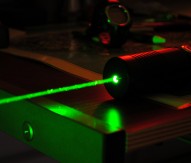
Artificial muscle ‘remembers’
Motion control and memory have been combined for the first time in artificial muscles following a breakthrough by the University of Cambridge in the UK.
Receiving funding from the European Research Council, researchers have developed false muscles which can learn and recall specific movements. Scientists have produced a material, known as polymeric electro-mechanical memory, and the movement of the artificial muscle developed by the scientists can independently store, learn, and later recall, a variety of different movements.
Leading the research, Dr Stoyan Smoukov commented: “Muscles in animals have the ability to both control motion and develop muscle memory in the same tissue, but reproducing these multiple functions in an artificial muscle has not been possible until now.”
After chemically modifying thin strips of a bendable, commercially-available material which is used in batteries and fuel cells, the researchers programmed a variety of shapes at different temperatures and taught the artificial muscle to ‘remember’ the movement associated with each shape. The movements can later be recovered one-by-one, on demand, by going back to the temperature which was used to programme it. The shape and movement transformations are reversible: the restored states can be cycled thousands of times using low voltage inputs (between one and two volts). These low voltages and the potential biocompatibility of the muscles could lead to bio-implantable devices.
The ‘muscles’, made from smooth plastic, could eventually be used in a wide range of applications where mimicking the movement of natural muscle would be an advantage, such as robotics, aerospace, exoskeletons and biomedical applications. Details of the investigation are published in the journal Materials Chemistry C.




